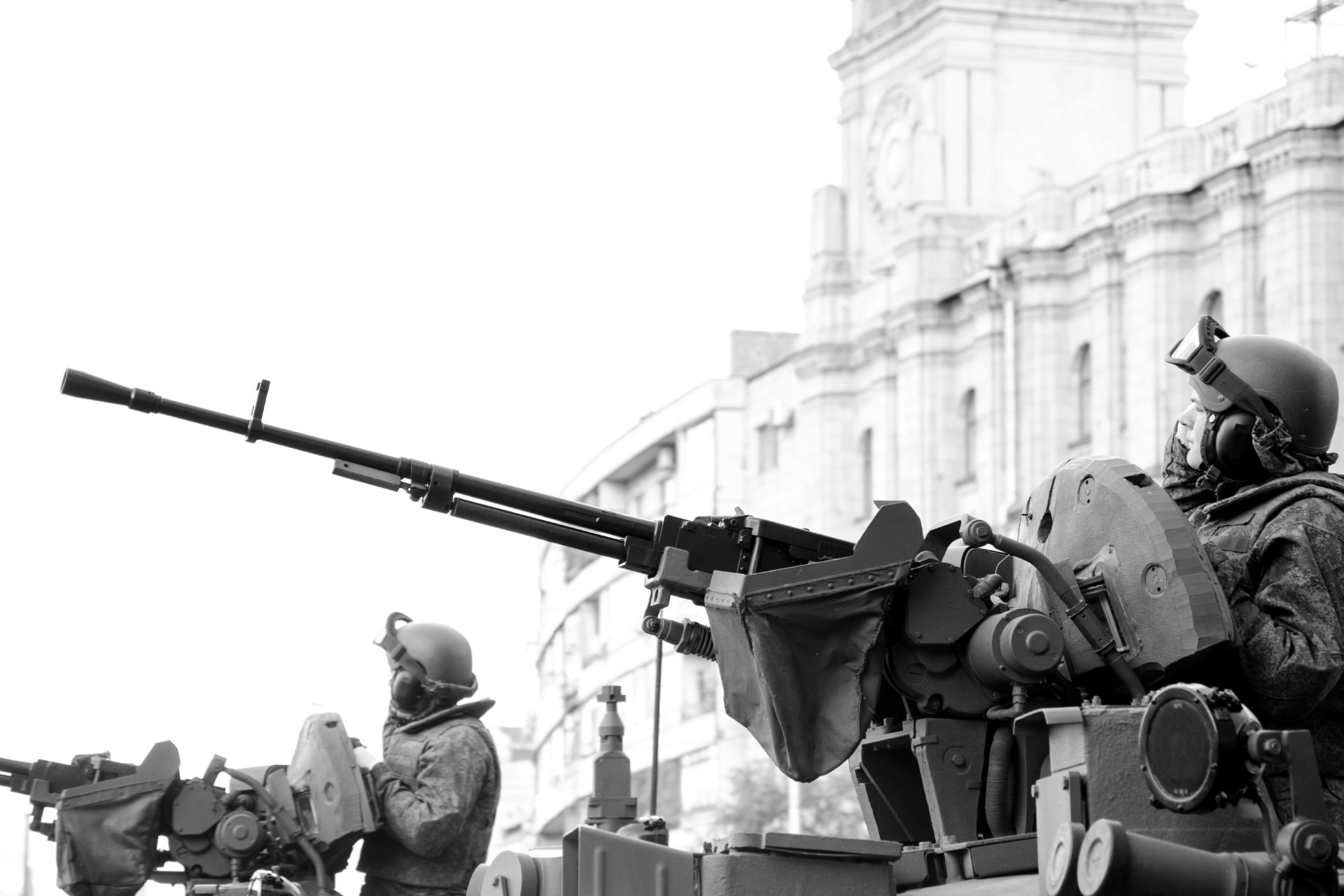Researchers are making unbelievable predictions about the future of artificial intelligence (AI). Similarly, how we interact with robots has come a long way.
In the recent past, futurists were expecting to launch flying cars. They also hoped to solve all of our energy problems by the end of the 20th century. However, we’re almost done with the first quarter of the 21st century! And yet…we don’t see such cars anywhere in the world.
So, what’s the future of using robots in warfare? Do they have the ability to replace humans? What could be the consequences of this replacement? Let’s start by admitting the reality that robots are not sentient life forms. They have no sense of critical thinking or decision-making ability. Compared to this, human soldiers can do a lot more. They can immediately respond to unpredictable situations with nuance and clarity.
From evaluating unique situations — by tracking the movement of enemies to responding according to their body language — human soldiers can earn personal trust with people they encounter. This ability is very important in insurgency environments. These battlefronts require trust-building ability from soldiers more than location recognition and the destruction of an enemy.
So, why can’t we trust robots in warfare? Here are the five primary reasons that we still need flesh-and-blood soldiers to fight our wars and keep us safe.
1. Robots lack multitasking ability.
A very prominent issue related to the use of robots in warfare is their lack of multitasking ability. On the other hand, a human soldier can do many things in sequence without thinking twice.
Human beings can identify an enemy vehicle, decide on the right weapons according to the situation, predict the path and then engage the target. These simple yet life-or-death sets of tasks are beyond the grasp of robots.
Scientists are working on this issue by using a combination of AI to construct different models to perform individual tasks. This solution seems quite challenging due to the huge investment in sensing and computing power. Moreover, it would also require a mass level of training and testing of robotic systems.
Not to mention, robots are unable to recognize different objects in the same domain. For example, if a trained robot can identify a Chinese Type 99 tank, then it won’t be able to recognize a T-90. This is true even though both tasks fall in the image-recognition category.
2. Machines still lack human-like movements.
Even though we have seen much advancement in AI technology, scientists are still unable to design a robot with human-like movement.
For example, no robot can mimic the complexity of human hands. Robotic hands are still quite clumsy. Moreover, researchers have worked on this issue tirelessly and yet have not achieved enough success to make them viable. Lab-created hands still lack the dexterity of human hands.
3. Robots can fall prey to hacking.
Another big challenge of using robots in warfare is the fact that enemies can hack robots. They can be hijacked and used to fight against their own side. By manipulating a few lines of code, they can turn into enemies rather than allies.
Of course, this is not the case with human soldiers. Even if a few soldiers (for whatever reason) betray their companions, the entire army won’t follow suit. Additionally, human soldiers have moral sentience and a sense of patriotism that will not allow them to act against their orders.
4. Absence of decision-making ability.
Another reason why robots have not made their way into warfare is that they lack the ability to make their own decisions.
Whatever behavior comes from a robot is controlled by a black box. Humans are in complete control of the decision-making process of a robot.
This represents a very serious problem in cases where critical decision-making ability is used as an output. It’s very important that humans should be able to evaluate the system and learn why it makes mistakes. It’s an open research concern that researchers still carry full liability in every situation where robotic systems are involved.
5. Insufficient control of manipulation.
Even if researchers get a lead in making human-like artificial skin and hands, there are still many challenges. Primary among these is control of manipulation.
It takes years for a human child to learn and understand inputs and the context within the inputs. On the other hand, robotic systems can’t even recognize an object of the same domain.
Moreover, they lack critical positive emotions such as sympathy and compassion which are very important to achieving peace during warfare. Due to this reason, human presence in war is very important. Soldiers can make better and wiser decisions on the spot, no need to write thousands of lines of code.
Given these reasons, pessimists can relax. However, optimists really need to settle down, too. There is no doubt that robots are slowly making much progress in many fields. In the next two decades, they will be more visible in many domains of life.
However, robots still have a long way to go before they can match fundamental human skills and make their appearance in our military. There are a lot of challenges that researchers must address before they can responsibly be used in warfare.













